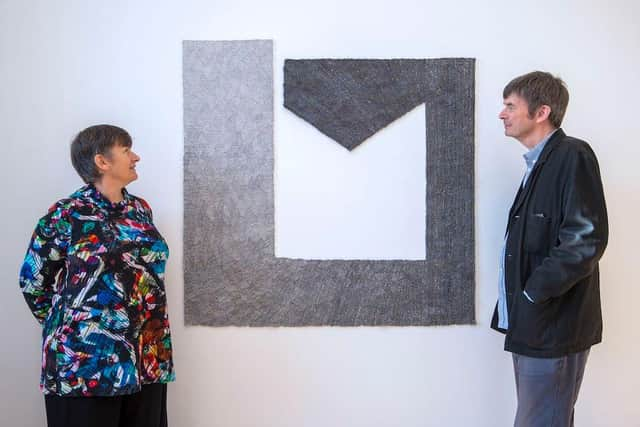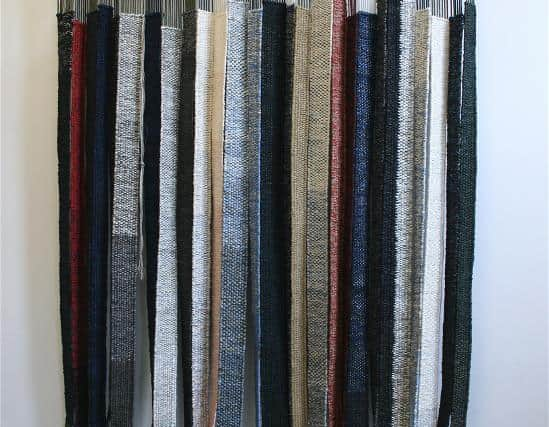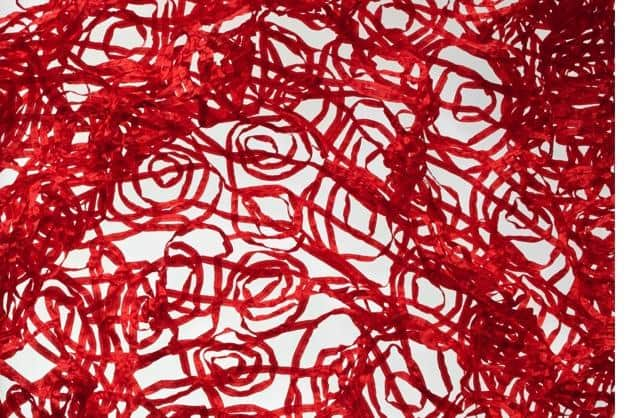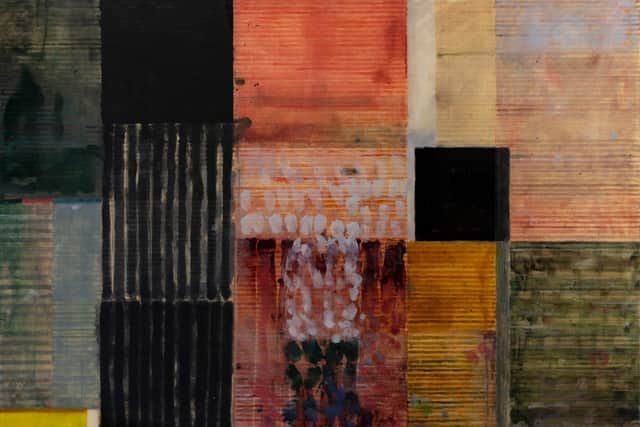Art reviews: The Cordis Prize | Nuno | Paul Furneaux | Story Forms


The Cordis Prize for Tapestry, Inverleith House, Edinburgh ****
Nuno, Dovecot, Edinburgh ****
Paul Furneaux: Mado, Royal Scottish Academy, Edinburgh ****


Story Forms, Patriothall, Edinburgh ****
Advertisement
Hide AdWorks by the 20 artists shortlisted for this year’s Cordis Prize for Tapestry are on display at Inverleith House in Edinburgh. Tapestry is a very ancient art, but the brilliant weavers at the Dovecot workshop have shown how it is still vital. Historically, tapestries had a practical function as well as an aesthetic one. Hung against cold stone walls, they provided insulation and the warmth and the tactility of wool is still a big part of their appeal, so there is a residual sense that tapestry still has a function as furniture. Not all the artists in the Cordis Prize show seem entirely convinced of this and in spite of the enduring vitality of the classic form, some of them give us knotted string and the contents of the rag bag instead of weaving.
Some of the knotted string is actually rather beautiful, however. Anne Stabell’s Under the Surface, for instance, is made of hanging strings of rich brown, undyed wool with a web of white wool woven across it suggesting the pattern of tree roots under the ground. It is very beautiful but as with much contemporary art, you do wonder how it could ever be maintained in a permanent installation. Kaktja Beckman’s Little Black Dog is equally beautiful and marginally more practical. It is a hanging rug of woven black linen with unwoven strands of a lighter fibre loosely hanging against it. This second fibre is ramie, a very ancient vegetable fibre that the Egyptians used and others no doubt long before them. Even without such ancient associations, this simple black rectangle is subtle and quietly eloquent.
Anne Bjørn’s Combines II does actually include knotted string. It hangs together with two layers, one of cut, the other of burnt fabric. Fiona Hutchison’s Wall of Water is rather similar, dangling strands of tangled blue cotton, linen and plastic. Angela Maddock’s Cloth Body is the contents of several rag bags cut in strips and tied into a vast bundle on the floor. Maija Fox’s The Socks of a Companion That Encourages Me to Notice, is a charming but slightly daft composition of empty, grey woollen socks standing on a rug, but Jo McDonald’s Reconnections, a hose made of tiny bits of cut up second-hand books strung on a thread, really is plain daft.


There is however also more straightforward tapestry. Martin Jørgensen’s Bright Red is enormous, abstract and flat-woven out of linen and ramie. Misako Nakahira’s Fusion is also abstract with subtly interacting wave patterns in yellow on white. Chrissie Freeth’s Song of the Woods with four girls and a dog in a schematic wood is very different and pays homage to the imagery and courtly themes of medieval tapestries. Others too are figurative, while Patrick Stratton simply gives us a very large image of his toothbrush and toothpaste. Louise Martin’s Lifetime is winner of the prize, however. It is woven in a mix of linen, silk, cotton and paper, and is an open, cut-out shape like an element of Greek key pattern and graduates from dark grey above to light grey below. Most of the other works here accept that the way it hangs is an essential part of tapestry, even knotted string, but this looks uneasy. It could never hang comfortably because the heaviest and the darkest element is at the top and looks unsupported. The works that I kept returning to were Beckman’s Little Black Dog and Shroud of Insecurity by Zhanna Petrenko from Ukraine. It is rich and detailed. It never quite reveals its secrets but it constantly invites you to keep looking.
At Dovecot itself, there is an exhibition of the work of the innovative Japanese textile workshop, Nuno. Founded 40 years ago, the workshop has pioneered both the revival of traditional craft methods of textile production and the adventurous combination of old methods and new materials. Sudo Reiko is the current head designer and is credited here with finding a way to use the coarse outer layer of a silk worm’s cocoon to create a beautiful and presumably durable black and white fabric. The workshop has also reinvented chemical lace to create a gorgeous scarlet lattice of interlocking lines and spirals. The explanations are fascinating and some of the displays beautiful even without explanation. One of the finest is a "manmaku” – a long, horizontal curtain used traditionally for demarcating ceremonial spaces. This one is made up of squares of gorgeous cloth from workshops across Japan.
The rectangular patterns and bright colours of the Nuno manmaku and the use of traditional Japanese techniques both find direct echoes in the work of Paul Furneaux in Mado at the RSA Academicians’ Gallery. Furneaux is a master of mokuhanga, the Japanese technique of woodblock printing, and all but one of the works in the show are examples of this beautiful art form, though he has also worked on the printed surface of some of them. They are frequently diptychs or triptychs with the surface printed up to the edge and then abutting a similar neighbour to make a single composition. Mado means window and the one work that is not a woodblock print, but is painted and drawn, is called Rain Window, Looking East. There are others with Window in the title, too, and also several with Rain, or with Haar. These titles suggest that his compositions of rectangles of delicately printed paper with wonderfully varied colour, often in overlapping layers, are windows onto drifting weather, or perhaps they are Japanese screens of translucent paper hinting at life going on behind them.
Advertisement
Hide AdFurneaux certainly exploits to the full the subtle beauty of the woodblock technique. Some of the works are simply framed. Others are just presented as blocks, some with a hint of three-dimensional relief. Many are coated with a high-gloss resin, however. This is to avoid what in his introduction Arthur Watson calls the tyranny of the frame. The Pre-Raphaelites, Whistler and Arthur Melville got round the problem of the frame by brilliant designs of their own. Melville is especially relevant here because he was both much influenced by Japanese art and he was framing watercolours, works on paper like these. Frames can certainly be clunky things for such delicate works, but it is a shame to lose the exquisite surface of the paper under glossy resin. Perhaps Melville’s pioneering example could offer a different solution.


Story Forms, a three-handed, week-long show at Patriothall features work by Olivia Irvine, Linda Kosciewicz and Michele Marcoux. Kosciewicz’s photomontages are of naked women embracing nature, while Marcoux’s landscapes mix a certain abstract expressionist freedom with recognisable scenes. I particularly enjoyed Irvine’s landscapes however. Lively and loosely painted, their colour is brightened by her use of light-toned tempera, and her dioramas painted on the inside of cardboard boxes are a delight.
Advertisement
Hide AdThe Cordis Prize for Tapestry until 12 December; Nuno until 8 January; Paul Furneaux until 21 November; Story Forms until 31 October
A message from the Editor:
Thank you for reading this article. We're more reliant on your support than ever as the shift in consumer habits brought about by coronavirus impacts our advertisers.
If you haven't already, please consider supporting our trusted, fact-checked journalism by taking out a digital subscription at https://www.scotsman.com/subscriptions